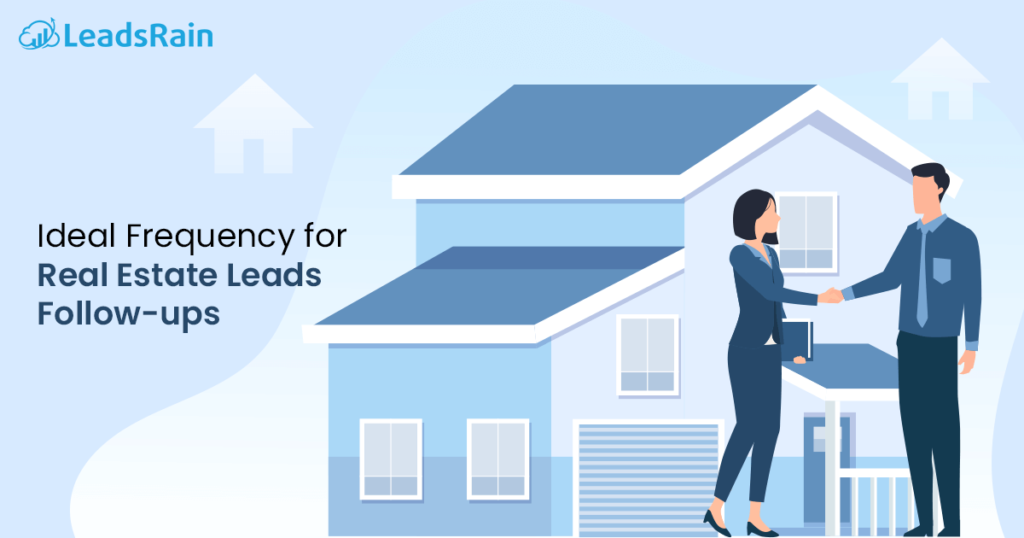When it comes to converting real estate leads, follow-ups are your lifeline. But how frequently should you be reaching out? Too little contact, and your leads grow cold. Too much, and you risk coming off as pushy. Striking the right balance is essential, but how do you figure out that sweet spot?
In this article, we will discuss a fresh approach to real estate lead follow-ups, backed by industry trends and innovative methods you might not have thought of yet.
1. The Golden Rule of Timing: Lead Segmentation
One size does not fit all when it comes to follow-ups. First things first: segment your leads. By categorizing your prospects into hot, warm, and cold, you’ll be able to tailor your follow-up frequency based on their current level of interest.
- Hot leads (actively searching): Follow-up every 1-3 days. These leads are on the verge of making a decision, and consistent contact keeps you top of mind.
- Warm leads (interested but not urgent): Weekly touchpoints work best here. Provide them with valuable market updates or property suggestions to keep the relationship warm.
- Cold leads (just browsing): Every 2-4 weeks. A light, value-based approach helps build trust without coming off as intrusive.
Pro Tip: Use Behavioral Triggers
Incorporate behavioral triggers in your CRM. When a lead revisits a listing or engages with an email, it’s a signal to follow up. This allows you to time your contact when they’re showing renewed interest.
2. Adopt the Value-Driven Follow-Ups
Your follow-up isn’t just about checking in; it’s about adding value. Potential homebuyers are flooded with information, and the ones that stand out are those that provide meaningful insight. A good rule of thumb is to give, give, give, and then ask.
- First contact: Provide relevant market data, pricing trends, or buyer guides.
- Second contact: Offer property suggestions that match their preferences.
- Third contact: Invite them to open houses or virtual tours.
After delivering consistent value, you can then ask if they’re ready to move forward.
3. Leverage Automation, But Stay Personal
Automation can save you time, but it should never feel robotic. The key is to blend automated follow-ups with personalized touches. Use tools that allow you to schedule ringless voicemail drops based on lead activity but make sure to customize your messages.
- Ringless voicemail can be used for general updates, new listings, or reminders without being intrusive.
- Personalized texts or calls are best reserved for leads that have shown specific interest or are nearing the decision phase.
Pro Tip: AI-Powered Ringless Voicemail
AI can analyze lead behavior patterns to predict the best times for follow-ups. Advanced systems can tell you not just when to drop a voicemail, but also tailor the message using voice cloning for a hyper-personalized touch.
4. Monitor Lead Fatigue
The biggest mistake agents make is over-contacting their leads, which leads to “lead fatigue.” Prospective buyers who feel overwhelmed by constant calls or emails are more likely to disengage.
The solution? Monitor your leads’ responses and adjust your strategy accordingly.
- If a lead has stopped engaging with your follow-ups, reduce your frequency.
- If they respond positively, maintain or slightly increase your touchpoints.
Fresh Tip: Opt-Out Monitoring
Include an “opt-out” option in your follow-ups, no matter which channel you are using, allowing leads to choose the frequency of contact. This keeps your prospects engaged without them feeling suffocated by your outreach.
5. Create Urgency with Scarcity
When inventory is low or a property is generating a lot of interest, let your leads know. “This property has had 10 showings in the last 48 hours—let me know if you’d like to book a viewing before it’s gone.” Scarcity can motivate hesitant leads to act sooner rather than later.
6. Be Adaptable: Every Lead is Different
The frequency of follow-ups should be fluid and adaptable. Some leads will respond well to frequent check-ins, while others may need space to consider their options. The key here is responsiveness—always be available when they’re ready to engage. Set reminders to follow up, but don’t hesitate to switch gears if a lead seems less responsive.
Conclusion
The ideal follow-up frequency isn’t set in stone—it’s dynamic and should evolve based on the lead’s actions, the market, and your relationship with them.
The ideal real estate lead follow-up combines timing, value, and personalization. With the right blend of lead segmentation, leveraging behavioral data, and balancing automation with human touch, you can maximize your chances of conversion without burning out your prospects. Be very clear that your ultimate goal is to build trust and maintain top-of-mind awareness, not overwhelm your leads. Want to know more about real estate lead follow-up and strategies to use? – Connect with our experts now or write us a line at support@leadsrain.com.
